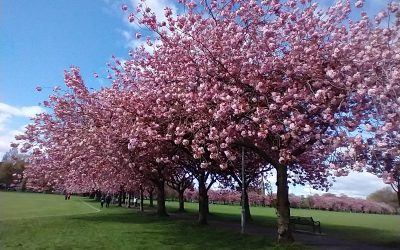I’ve been learning the piano part of the first piano quintet by Louise Farrenc, a 19th-century French woman composer who enjoyed a fine reputation in her day as a concert pianist and teacher as well as a composer. Unfortunately, at a time when the French music-loving public was fixated upon operas, Madame Farrenc never wrote an opera. She loved instrumental music, and as Saint-Saens complained at one point, anyone who wrote instrumental music in Paris was fated to have to put on the concert themselves, inviting their friends and the press, for the general public wasn’t interested.
Louise Farrenc made her name as a pianist, and when she turned to teaching and was appointed to a professorship at the Paris Conservatoire, she had great success with her students, many of whom won prizes and became professional musicians. Despite her success and the esteem in which she was held, you may not be suprised to learn that for over a decade Louise Farrenc was paid less than her male contemporaries were.
Learning the piano part of her first quintet reminds me of similar experiences with learning the piano parts of works by Hummel, Berwald, Spohr and early Mendelssohn. It’s a style of writing where the pianist is constantly rushing up and down the keyboard in fluent arpeggios, brilliant scales in thirds, arpeggios in contrary motion and the like. The fingering needs to be worked out in detail in order for the figuration to be secure at the fast tempi the composer indicates.
To my ear this kind of 19th century piano writing, often in sharp contrast to the long melodic lines in the other parts, is like the kind of shading or cross-hatching that an artist would use to give contour to a line drawing. Most of it is, in fact, just virtuosic decoration of the harmony. It’s harmonically simple, but mechanically tricky. As such, the piano writing falls into the category of ‘more difficult than it sounds’, a category which every pianist will recognise with a sigh.




Not much consolation to you but I spend a lot of time writing music that ‘sounds more difficult than it is’!
Thank you, Susan, for this illuminating post. String players have too little sympathy for that category of piano music. I hope you will consider recording this work — perhaps with some Fanny Mendelssohn, or Clara Schumann?
Where on earth did you hear about this fascinating woman? Please could you write a book about the famous women of the piano, Susan?!
Mendelssohn and Farrenc were the first generation to have grown up learning the piano. The generation before had come of age with the harpsichord, and only learnt the piano in adulthood.
Composer of the Week on BBC Radio3 featured M. Farrenc just before Christmas.
Louise Farrenc was also responsible for editing a massive collection of piano music, Le trésor des pianistes, which included repertoire from the 16th century to about 1850. It was cited in Wm Newman’s Sonata in the Classical Era (1962?) as including, at the time, e.g. the most comprehensive collection of CPE Bach’s keyboard works than available. The editing makes these volumes look like a predecessor of “Urtext” editions, especially considering the primary sources available to her in the 1860s.
I have recently read most of your books, and have been recommending them to fellow musicians. I also have and admire several of your CDs.
I didn’t know about Louise Farrenc’s treasury of piano music and am glad to have it brought to my attention. Thank you too for your kind comments.
Amen to wanting to hear you play Farrenc! I’d add that her husband, the flutist and publisher Aristide Farrenc, wrote one of the most detailed ear-witness descriptions of the rubato of Hummel and Chopin (the bit about the strict left hand but inimitable freedom in the right hand), which he admired. He contrasted it with the rubato of Liszt et al., which he deplored – the Parisian culture wars, illustrated! I am certain that Mme. Farrenc agreed. Apparently she took lessons with Hummel, whom the couple knew – which further confirms your point. BTW, Robert Schumann wrote an enthusiastic review of her early “Variations on a Russian Air.” It is, as he said, far better than most Parisian salon music of its time – and it really is good stuff, definitely worth looking into.